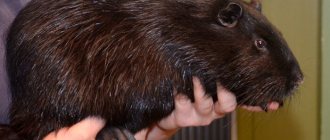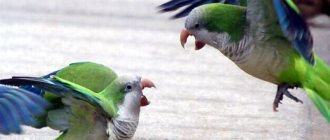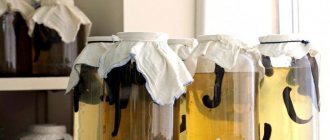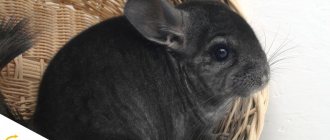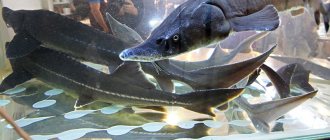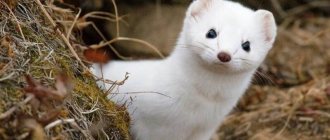Sheep farming is popular among farmers and commercial farms. Beginning farmers often begin their economic activities by raising sheep. The rationale for this choice is the many advantages of these animals. These include unpretentiousness to living conditions and environmental factors, ease of care and nutrition. Let's look at how to properly organize sheep breeding, and what requirements are important to comply with.
Why are sheep bred?
Before you begin planning the arrangement of a new farm, you need to make accurate calculations of costs and profitability of the activity. Of course, it all depends on the size of the proposed farm. After all, you can raise sheep at home for your own consumption or with commercial interests you can sell the products to other consumers.
It is important to remember that sheep farming will not provide excessively high profits, but a 25% annual profitability of each individual can be obtained. And at home, the family will be provided with high-quality, tasty and environmentally friendly products.
If a farmer already has experience in organizing and maintaining livestock farming, then he will not encounter any particular difficulties when raising sheep. However, it is still recommended to first visit an existing sheep farm and study the advice and recommendations of experienced sheep breeders. And for beginners this will be a mandatory requirement. Certain features will be caused by the breed and climatic conditions of the animals, however, in general, the breeding process is standard.
The farmer must initially understand what products he can get, since the choice of breed depends on this. Sheep farming provides people with:
- meat;
- milk;
- fat;
- wool;
- skin.
These products can be consumed within the household itself, and in case of large volumes, they can be sold to a market or distribution network, or to specialized factories.
Ewe and young animals
Reproduction of a flock is part of sheep farming. Most females reach puberty at 7 months, but if you want to mate correctly, it is better to choose one-year-old females for this purpose. Any breed of sheep is capable of reproducing without human intervention. In order for a ram to cover a female, it is enough to place the animals in one enclosure during the hunting period. If fertilization is successful, then within 130-150 days the farmer will receive a young brood.
But how can you tell if a female is in heat?
- If you run a large farm with a large flock, then it will be easy to spot a sheep ready for mating: it jumps on other animals.
- The genitals swell and clear mucus begins to be released.
- The animal becomes restless, constantly runs around the enclosure, and bleats loudly.
- She immediately calms down in the presence of a male.
In the first days, lambs feed on their mother's milk. Then the diet becomes a little richer:
- Second week of life. 200 g of oatmeal is added to mother's milk. It is easily digestible, but already prepares the body for coarser food.
- Third week. Dry leaves of the fruit tree are added to the lamb's diet.
- Fourth week of life. It is necessary to start feeding babies with root vegetables (the ideal option is carrots). Calculation: 30 g per head. Within a week, the amount of vegetables should reach 40 g.
- From the 35th day, the animal begins to be given compound feed in the amount of 50 g per head.
- At two months of age, the amount of milk is reduced to 150 g, and the norm of oatmeal is 700 g. The amount of feed is increased to 150 g.
- At 3 months of age, milk is completely abandoned. The basis of the diet is greens and 300 g of feed per day.
If all these steps are followed correctly step by step, you will be able to raise a sheep with first-class farming performance.
The note! On many farms, sheep are raised not for their fleece, but for their meat. The profitability of slaughtering an animal is 11-12 months. During this period, the female gains up to 55-60 kg, and the male – 80 kg. The meat yield ranges from 60% to 78%. The meat does not have high gastronomic qualities, but has a nutritious and healthy composition.
Care, feeding and maintenance are not everything. In order for sheep to please the owner, they must always be healthy, therefore they must be vaccinated.
Meat products
Mutton or lamb should be classified as a dietary meat product. Therefore, raising sheep for meat production is quite profitable and promising. The advantage of meat is that it is rich in vitamins, microelements and amino acids. At the same time, the carcass contains much less fatty component compared to pork and beef - 2-3 times.
Adipose tissue itself is less saturated with cholesterol. Its presence is 4 times less compared to other species used in animal husbandry. A low cholesterol content in human blood reduces the risk of cardiovascular and cerebrovascular diseases, and, therefore, reduces the likelihood of heart attack and stroke.
Sheep breeds suitable for breeding
For home breeding of sheep, the best breeds remain those that produce large amounts of meat and wool. It is best to start raising these animals with the most common breed, which remains the Romanovskaya. It is this breed that can provide humanity with milk, meat and wool.
Balabas
Sheep breeds
There are other breeds that are not much inferior to the Romanovskaya.
Among them it should be noted:
- Balabas,
- Tushinskaya,
- Karachaevskaya.
In fact, there are at least thirty-nine of them that are suitable for home breeding.
Among the felt breeds, the best sheep are the Gissar breed, which belongs to the fat-tailed species. There are about one hundred and seventy-five breeding breeds in Russia. Among them, ninety-eight are fine-fleece, twenty-eight are semi-fine-fleece, forty-five are coarse-wool, four are semi-coarse-wool, and only two are meat breeds.
Each region raises its own special breed of sheep.
The main sheep breeding regions remain:
- North Caucasus,
- Southern Federal District,
- Volga region,
- Central Black Earth strip of Russia,
- Southern Urals.
Important! When buying an animal, you should carefully examine it to make sure that it is healthy, has a good physique, thick, shiny hair, and healthy and not loose teeth. Under no circumstances should you buy a sheep whose mucous membrane is inflamed or has formations and growths on its body.
Wool orientation and use of skins
The classic product obtained from the sheepfold organization is wool. This direction of sheep breeding remains leading. This is explained by the high and constantly growing demand for farmers' products - sheep wool, which is used in the manufacture of clothing and other materials.
Important! There is quite a high demand for animal skins. They are used in the production of leather products.
There is always a field of application for lambskin leather. It is used to create original samples of clothing and accessories. This feature is explained by the extreme softness of the source material, and therefore it is not surprising that many fashion houses want to use this variety exclusively. If you organize the dressing process correctly, this direction will bring quite high profits.
Right choice
Before breeding animals, you should decide on the purpose of sheep farming:
- If you want high-quality wool, then you should buy:
- Stavropol;
- Altai;
- Caucasian;
- if you dream about food and wool, then the following are suitable:
- long-haired: North Caucasian, Kuibyshev, Tien Shan;
- shorthair: Latvian, Estonian, Lithuanian.
If livestock is bred to obtain maximum benefit, Balabas, Karachay and Tushino are ideal for this. Among the fat-tailed breeds they differ:
- edilbaevskaya;
- Gissarskaya.
The most profitable for breeding are Romanov sheep. They show remarkable results in terms of product quality, grow quickly, easily tolerate various diseases and are distinguished by high offspring. Even inexperienced farmers can cope well with animals of this breed.
Breeding rams and sheep should begin with the construction of a sheepfold
Why do farmers raise sheep?
Livestock activities related to the breeding of sheep and rams are now popular and in demand in Russia and the world. The reasons lie both in the characteristics of the animals themselves and in the characteristics of the resulting products.
Advantages of sheep and sheep farming
This area of livestock farming is developing due to the positive physiological qualities of sheep, as well as due to uncomplicated living conditions. This is manifested in the following features:
- Sheep farming is a fairly profitable area of livestock farming and at the same time relatively uncomplicated. Acquiring and maintaining several individuals does not require large financial investments and physical effort. But there will always be a demand for the products received.
- Possibility of using areas previously traversed by herds of cattle for grazing flocks.
- There is no need for large areas for housing - sheep can easily tolerate crowded conditions in the herd.
- Undemanding when organizing maintenance in winter. These animals only need a warm and dry room with a small amount of straw.
Product profitability
Farmers receive significant benefits from the high commercial quality of products obtained from sheep farming:
- The resulting meat has an excellent taste. It is dietary, and therefore suitable for inclusion in the diet of both adults and children.
- Sheep milk is healthy and rich in nutritional components compared to, for example, cow milk. Not only classic cottage cheese and butter are made from it, but also cheeses, feta cheese, and yogurt.
- The resulting fat tail fat can be used in cooking, as well as in medicine as a remedy. In the latter case, it will be needed by people suffering from chronic diseases of the lungs, joint tissue and other ailments.
- Wool is suitable for making warm mittens, sweaters, and various winter clothing, which additionally produce a healing effect.
- Sheep skins can be used to sew sheepskin coats, hats, and shoes. They are popular as a finishing material for interior decoration and the manufacture of car seat covers.
- Sheep waste products are also used. Manure has a high level of heat transfer, and therefore it is applicable as a fertilizer.
Rams and sheep can be raised in all regions of Russia. It is important to remember that dampness is dangerous for these animals due to its negative impact on the immune system. Therefore, the barns must be dry; the herd should not be taken out to pasture in rainy weather.
To organize a sheep breeding business, large financial investments are not required. The animals are unpretentious and early maturing, which is associated with potential business profitability.
Sheep farming as a profitable business: advice for a beginner
The success of doing business depends on compliance with rules and regulations.
Sheep raising is considered one of the most profitable activities in livestock farming
Animal care has specifics:
- it is necessary to create a nutritious and complete diet;
- build pens (insulated for the winter, with electricity);
- provide walks (the area near the paddocks and pasture in the summer).
Farming business, which is aimed at breeding sheep, allows you to develop gradually.
Advice to a novice entrepreneur is to pre-select a work format.
This could be farming or a private household. In the first case, the pens are equipped on their own land, in the second, the plot is rented.
A businessman must draw up documents to conduct business within the framework of current legislation:
- registration documents of the businessman (TIN, tax registration certificates);
- certificates permitting farming activities (including the conclusion of the SES);
- documents for ownership (if the plot is personal) or for rent.
Important! There is a limit on land allotment for this type of business - up to 2.5 hectares for the form of personal subsidiary farming.
Sales of products
Advice to a novice entrepreneur: first select a work format.
Keeping and breeding sheep is aimed at obtaining financial benefits.
Products:
- meat;
- meat products (semi-finished products);
- wool;
- yarn;
- skin;
- milk.
In 90% of cases, the sale is wholesale (agreement with wholesale buyers). The entrepreneur receives a permanent sales channel.
Attention! The profit is 20-30%, since prices are set to the minimum. Direct sales increase benefits to 40-65%, since cooperation takes place with retail customers.
Permanent sales channels:
- restaurants;
- cafe;
- recreation centers;
- catering points;
- shops and large chains;
- Internet trading.
It is recommended to open a shop selling milk, meat, meat products or wool on a farm.
At the first stage, production equipment can be leased. You can save up to 50% of the cost by buying used or at auction.
Sheep farming: pros and cons
Housekeeping requires financial and physical investments. You need to choose sheep farming as a business after weighing the pros and cons.
Sheep do not require specialized buildings
Before starting to draw up a business plan, it is recommended to take into account that keeping sheep and rams is easier than cattle, but cattle produce more meat and milk.
Sheep do not require specialized buildings - for their maintenance, you can install a light shed with insulation in the compartment for newborn lambs.
Important! Pastures are a mandatory element of maintenance. In 50% of cases you will have to sow them yourself.
Pros of content:
- cultivation does not require special knowledge;
- the queen is capable of bearing 2 offspring per year;
- animals are hardy and can withstand temperature changes;
- fertility – 120-300% (depending on the breed);
- the sheep are in good and sound health;
- types of products are varied;
- Possible sale of manure (for fertilizer);
Be sure to read:
Feeding sheep: diet, daily intake, fattening in summer and winter
Disadvantages of business:
- one-time investments – 3-4 million rubles;
- workers needed - 3-6 people;
- not all fertile lands can produce a harvest sufficient to feed the livestock;
- the need to obtain a veterinary passport;
- the area of fields and meadows for pastures should be 1–4 hectares (depending on the type of business);
- land will have to be purchased or leased.
It is better to register a legal entity, since large organizations prefer to work with them . In regions such as the Stavropol Territory or the North Caucasus, it is almost impossible to find a suitable site, since sheep breeding is highly developed there.
Biological characteristics of sheep
Modern sheep used for domestic breeding are characterized by fairly high rates of meat, milk, and wool productivity.
Sheep farmers choose breeds that have the following important qualities:
- high fertility rates;
- ability to quickly gain live weight;
- unpretentiousness to living and feeding conditions;
- strong immunity.
However, to obtain the planned results, it will be necessary to take into account the needs and biological characteristics of sheep when breeding. First of all, the herd nature and forgetfulness of these animals attracts attention.
Sheep farmers often have a problem when the flock forgets the way home when returning from the grazing area. Therefore, these animals are usually grazed together with goats or cows. In addition, having trained dogs will not hurt. After all, one sheep that follows the leader will pull the entire flock with it.
On average, sheep can live about 20 years. But usually, when breeding in a private backyard, the standard life expectancy of purebred queens and sires does not exceed 8 years. Young animals, which are initially intended for meat, will be slaughtered before they are one year old. But animals that are raised for wool use can live longer.
The most important indicators indicating the merits of a breed or individual include the number of lambings per year, as well as the level of fertility. Usually sheep give birth once a year. This happens at the end of winter or in the first weeks of spring.
The duration of pregnancy is approximately 5 months. The norm will be 1 lamb per lamb, although deviations are possible. In the latter case, we can distinguish the Romanov breed, which is capable of lambing twice a year.
Conditions for keeping sheep
Sheep are characterized by poor development of higher nervous activity. In this regard, group housing and feeding are used.
Stall (autumn - winter).
Stall (spring - summer).
| Preparation 1 month before the start of housing: |
|
| Stall housing options: |
|
| Room temperature: | from 6 to 8 C. (but during the lambing period the temperature is 15-18 C). |
| Room area: |
|
| Window installation: | not lower than 1.2 m above floor level. |
| Lighting: | electric (duty) lighting at night. |
| Floor: | raised above the soil level by at least 20-30 cm. Floor material: wood, concrete, adobe or earthen. For large farms: slatted floors. |
| Floor bedding: | spring or winter straw. Add straw every day. Daily requirement: 0.2-0.3 kg per head. Wood shavings, sawdust, etc. are used less often, as they can contaminate the fleece. |
| Feeders: | nursery type (single or double sided) with bars. This design prevents animals from trampling and scattering food. Simultaneous access to feeders is required for each sheep. Calculation (in linear terms):
A stand (10-12 cm) is required for lambs. |
| Drinkers: | Trough per 1 sheep:
|
Stall housing: (read more)
| Preparation for grazing |
|
| Content options |
|
| Content Feature: | The grazing regime and options for keeping sheep largely depend on natural and climatic conditions. |
| Types of pastures: |
|
| Grazing planning: |
|
| Calculation of pasture area per 1 sheep: | O = U*K / S*P O – number of sheep per 1 ha Y – yield of green mass of the entire pasture (1 c / per 1 ha) K – coefficient of grass consumption by sheep depending on the type of pasture: (%)
C – requirement for 1 day for grass stand (1 head, kg) P – duration of the entire grazing period (days). You need to add 25% to the final figure (in case of crop failure). |
Pasture content: (read more)
Choosing a breed for breeding
To ensure the efficiency of keeping and breeding sheep, it is necessary to initially purchase young animals of a breed that corresponds to the chosen direction of sheep breeding.
Lambs are selected based on target orientation. At the same time, it is believed that meat-wool and meat-fat breeds have the highest profitability indicators. In addition, they can withstand temperature changes, cope with winter weather, and allow them to produce high offspring.
Beginner sheep farmers will be interested in the following existing types of sheep:
- Sheepskin, represented by the Grozny and Stavropol breeds.
- Meat and sheep, including Altai and Caucasian sheep.
- Sheep-meat type - Georgian, Kazakh, Dagestan, Romanov breeds.
- Meat - sheep of the Saradzhin or Gissar breed.
Sheep of any breed produce high-quality meat. However, to ensure maximum profitability due to high rates of meat productivity, one should focus on specialized breeds.
If a farmer is interested in obtaining wool, it is advisable to choose a sheepskin breed. Moreover, depending on the characteristics of the wool, breeds are divided into fine wool, semi-fine wool, semi-coarse wool, and coarse wool.
Fine-wool sheep produce wool that is in high demand and valuable. This breed includes, for example, early ripening merino. But the most popular coarse-haired breed will be the Romanovskaya.
Other feeds
The diet of sheep should be varied, so it should include other components - silage, root crops, hay, combined and roughage. This is especially true in winter and autumn, when the herd cannot eat pasture and requires an increased nutritional value of the diet.
Silage is an important component of the sheep diet.
- Silo. For making silage, succulent forage from the pasture is used, as well as garden waste - tops, cabbage leaves, forage crops, etc. Before cooking, the grass mass needs to be slightly dried, otherwise the finished product will be too sour and the sheep will not want to eat it.
- Roots. The most beneficial foods for sheep are carrots, beets, potatoes, fodder radishes, and turnips. They contain a large amount of fiber and vitamins, which improve the functioning of the digestive system and the general condition of animals.
- Melon crops. Zucchini and pumpkins are a favorite treat for sheep. The beneficial substances that they contain improve the quality of milk and wool.
- Straw. Straw should be given to livestock in limited quantities. It increases the nutritional value of the diet, but is not very useful and can clog the animal’s stomach.
- Hay. Harvesting hay should begin in the summer, when the plants bloom and absorb the maximum amount of nutrients and vitamins.
- Compound feed. The composition of the combined feed includes grains and legumes, bran, vegetable meal, corn and other important components - starch, yeast, crude protein. When purchasing mixed feed, you should pay attention to their focus - the product may be intended for animals of a certain type or for sheep at a certain age.
Compound feeds compensate for the lack of nutrients in the diet
Sheep feeding rates are calculated individually. Single females can be fed only grass in the summer, while the diet of pregnant sheep should include hay (45%), silage (20%) and concentrates (25%). Breeding rams receive grass and concentrates in approximately equal parts, and lambs receive concentrated feed (45%), grass, silage and hay.
When preparing a diet, it is important to remember that plant foods do not contain all the nutrients necessary for the health of the herd. Animals may experience a deficiency of sulfur, phosphorus, iodine, copper, cobalt - special supplements must be used to replenish these microelements.
What vitamins to give sheep
It is necessary to calculate the cost of feeding sheep depending on the number of individuals in the herd. If the owner produces hay and silage on his own, as well as grows vegetables, he will only have to buy concentrated feed and vitamin supplements.
You can make your own hay for sheep
Keeping sheep is a profitable activity that requires serious expenses only in the first stages. A properly organized and well-established farm will pay for itself quickly enough and will bring good profits.
Content Features
Sheep are herd animals that have an interesting quality - they will essentially be natural insulators. This means that by huddling in groups, animals warm themselves. Therefore, this feature must be taken into account in the process of arranging the premises where the individuals will be kept. Due to the unpretentiousness of sheep, simple pens can be built for them and sent to pasture in the summer.
Setting up a sheepfold
With the arrival of autumn, the flock needs to be prepared for transfer to a sheepfold or paddock for the winter. It is important to provide comfortable conditions for animals to stay there, eliminating drafts or excessive humidity levels. Crowding of the herd should also be avoided.
Recommendations for arranging a room
It is recommended to adhere to the following rules to promote successful sheep farming:
- The premises must have good ventilation to prevent air stagnation in the pen.
- To house the animals, you will need dry and deep bedding.
- The area norms for one individual are 2.5-3 square meters. m, which allows us to guarantee the normal maintenance of the flock.
- During the stall period, the indoor temperature is maintained at 6-8°C. These conditions are necessary to ensure the health of strong individuals and their quality growth.
- The temperature during lambing period should be higher - about 15°C.
- The sheepfold should have feeders and drinkers.
Sheepfolds can be built with or without doors. The main thing is to exclude the presence of drafts and humidity. If there are gates, they are often left open even during the winter period, of course, when there is no frost outside. Open gates allow for favorable temperature conditions. But at excessively high temperatures, animals will suffer from attacks by parasites. In conditions of an optimal microclimate, the flock itself solves the problem of combating harmful organisms.
It is recommended to raise the floor of the sheepfold approximately 20 cm above ground level. Undoubtedly, a nursery with a drinking bowl will be required. At the same time, it is necessary to regularly monitor the cleanliness of the room, remove waste products, and change the bedding.
Preparing the sheepfold for winter
With the onset of cold weather, the flock is moved indoors. The norm of area per animal, as mentioned earlier, should be about 3 sq.m per individual. But at the same time, it is advisable to take care of the presence of a walking area up to 4 m in size. It is necessary to install a feeding trough in it and protect the animals with a canopy.
Before transferring individuals to the premises, it must be prepared. The sheepfold is thoroughly cleaned, all garbage is removed, and then disinfected with a special solution. You can prepare it yourself or purchase a ready-made composition at the pharmacy, and then dilute and use it in accordance with the instructions.
Important! After processing the sheepfold, animals cannot be brought into it immediately. The room must be ventilated for at least 7 days.
Pasture keeping of animals
To ensure high productivity of the flock, it is necessary to create conditions for grazing animals on pasture. If this is not done, additional costs arise for:
- purchase of feed, procurement and storage;
- additional equipment and maintenance of premises where animals will be kept.
Organization of grazing
If there are no suitable areas for grazing in the farm area, you will have to take a different route. In this case, it will be necessary to equip special areas for walking the flock. This area must be fenced with shields. And it is advisable to feed such a herd in the summer with mown pasture grasses.
As the vegetation cover on the pasture becomes depleted, animals are moved to new areas. One feature of sheep that helps farmers is that they bite the grass lower than goats or cows. Therefore, even in conditions of scarce vegetation on the site, the sheep will be able to find food for themselves. By consistently transferring the flock to new pasture areas, it is possible to minimize the risk of helminth damage.
It is possible to keep sheep on a tether. However, this will require regular transfer to new pasture areas. In addition, it is advisable to drive the flock out of a limited grazing area and encourage it to run short distances.
A flock of sheep is brought out to pasture in the spring, when the first vegetation 8 cm in height or more appears. However, sometimes the weather may not be pleasant - there will be rainy days outside, and dampness will be felt. In this case, it is necessary to protect the flock from high humidity, since due to wet wool, which is unable to dry, a number of diseases are likely to develop in animals.
The same feature should be taken into account in the fall, when the time comes for coolness and regular rains. But in the summer, in hot weather, early pasture to the meadow helps the sheep obtain useful and succulent vegetation.
Caring for animals while grazing
Pasture grazing does not eliminate the need to provide sheep with drink. It is good if there is a natural reservoir in the meadow area. However, if it is not available, drinking bowls should be installed and refilled at least twice a day. In hot weather, drinking bowls will need to be refilled more frequently.
Such efforts by the farmer will prevent dehydration and weakening of animals. To protect the flock from the sun, choose areas with natural shelter - lush trees. If they are absent, then it is advisable to install special canopies under which the sheep can hide from the scorching hot sun. In addition to drinking bowls, it is advisable to leave pieces of salt lick on the site.
In summer, the flock suffers from attacks by blood-sucking insects. For them, animals will be a source of food and a place to lay eggs on the surface of the skin. Therefore, it is important to alleviate the condition of sheep and prevent the development of diseases. This will require regular examinations, cleaning and disinfection of wounds and injuries. Attention and care should be shown towards weakened individuals.
Stable or housing
Sheep breeding is a profitable business if the animals are properly maintained and cared for. Most animals, such as sheep of the Romanov breed, Gissar, Merino, Texel, Romney and many others, thanks to their abundant hair, are able to withstand extremely low temperatures down to -30 degrees, but cannot tolerate sudden changes, drafts and high humidity. Therefore, sheep and rams must be kept in dry and quiet rooms with heating during the cold season.
If you are going to put sheep fleece up for sale, you need to give it a marketable appearance. Since sheep are not the cleanest animals, they need to be cleaned regularly in the barn, otherwise the fur will constantly get dirty and eventually lose its color and value. It is best to clean the enclosures every 2-3 days, changing the bedding to dry ones. The ideal option in this case would be straw.
Most modern sheep breeds suffer from a variety of pulmonary diseases. The cause of the disease may be bacteria or viruses, which quickly accumulate in damp litter and even if it is regularly replaced, microorganisms begin to deposit in wood and plaster. It doesn’t matter where you raise sheep, in the country, at home or on a farm, stables, sheds and buildings must be regularly whitened with lime. This procedure is carried out monthly.
The note! A sheepfold is a barn or warehouse for keeping sheep.
The simple maintenance of sheepdogs makes sheep popular among breeders. Of course, it is impossible to cram all the animals from the yard into one barn; each female and male should have a small space to move and sleep.
- For a ram you need 1.7 sq. m
- For females – 1.5 sq. m
- For young animals - from 0.8 to 4.0 sq. m
- Ewe with lambs – from 2.0 to 2.5 sq. m
These conditions of detention were approved by the Soviet GOST and still work.
The ideal option is a farm or a house, or a cottage with a large range where animals can run and frolic. Walking will allow you to keep sheep as close to wild conditions as possible. If you raise lambs without grazing, they can immediately gain excess weight, which will affect both the meat and down qualities of the breed.
Interesting fact! Romanov sheep are kept without pasture or walking. The whole point is the timidity of animals, which in open areas will run away from the sheep farmer at any loud sound.
Next, the farmer must take care of feeding the sheep and rams. We are talking not only about the diet, but also about animal feeders.
Features of feeding sheep
In summer, the cost of feeding the flock is minimal. At this time, animals spend most of their time on pasture, so for normal nutrition it is only necessary to ensure optimal grazing conditions.
Lambs and adults have a unique ability to find food by moving slowly across a patch of meadow. This ensures normal weight gain. Animals enjoy a variety of fresh grass. During the drives, experienced farmers control the speed of movement of the flock. Animals should not be left in one area for a long time, since the vegetation will be trampled down and adequate nutrition will not be possible.
If the grass cover is poor, you will need to supplement the diet with concentrates. They are given at a ratio of 300 g per lamb. If there is no possibility of grazing in summer, the herd is given freshly cut grass, which is quite difficult for the owner. In the pasture, care should be taken to install a drinking bowl, and it is advisable to leave a lick stone there.
To ensure a normal feeding process, you should choose the right place to install the feeder. At the same time, it should be positioned so that it is convenient for animals to eat food, and for farmers to add food to it. The best option would be to use a structure with a sloping bottom. It should be a nursery type feeder. Sheep will be comfortable if the height parameters of 20-25 cm are met.
In winter, you should take care of some changes in your diet. The food includes hay and supplements. The flock is fed with mixed feed and root crops. We should not forget about a sufficient volume of water. Its deficiency can provoke thermoregulatory failures.
Hay should be prepared in advance and stored properly. However, the diet needs to be varied:
- bran;
- vegetables and root vegetables - beets, carrots, potatoes, etc.;
- grain crops - corn, wheat, oats, rye;
- cake and silage.
It is recommended to pamper sheep with nutritious food during the day, and to give less nutritious food in the morning and evening hours. Before giving the animals concentrated food, the flock is watered, and silage is given before the animals approach the drinking bowl.
It is important not to deprive the sheep of salt and chalk. However, these animals are picky, so they may refuse contaminated chalk. In this case, it is advisable to mix forage with chalk at the rate of 100 g of chalk per 10 kg of crushed oats.
The highest rate of weight gain in sheep is ensured by the inclusion of green feed and legumes - clover, alfalfa - in the diet. In this case, the daily feed requirement is for:
- rams – up to 10 kg;
- sheep – up to 8 kg;
- young animals - 5-6 kg.
Pregnant and pregnant queens should be fed intensively. At the same time, it is important to control the quality of feed in order to exclude poisoning, which could result in the ejection of the lamb.
Young animals are slaughtered for meat at 3-9 months of age. At an older age, when the individual has reached 1 g, the meat begins to lose its consumer qualities. To speed up wool growth, sheep are given methionine. This is a drug in which a sulfur-containing amino acid is present in high concentrations.
What diseases do sheep suffer from and the fight against parasites?
Sheep can become ill when exposed to damp or cold conditions for long periods of time . In this case, they may develop pneumonia. Sheep begin to cough, appetite decreases, and breathing becomes difficult.
Be sure to read:
How much does a sheep weigh on average: live, after cutting or one year old, carcass slaughter weight and offal yield
Body temperature rises to 42-44 degrees. Treatment is with antibiotics (Biovit 80, bicillin, streptomycin). It is necessary to protect the flock, especially in winter, from drafts, and keep the animals warm and dry.
Sheep can suffer from rumen flatulence. The disease is manifested by loss of appetite, nervousness, and bloating. The reason is an incorrect diet. Treatment involves inserting a gas tube (through the mouth) and puncturing the scar.
In case of poisoning (by a poisonous plant), gastric lavage is performed.
To combat parasites, Thiabendazole is given; external parasites are eliminated by combing.
Sheep shearing process
The goal of sheep farming is not limited to obtaining tasty and healthy meat. Sheep can also be used for wool, which increases the efficiency of breeding. Animal wool is valuable; a variety of accessories are made from it - gloves, socks, sweaters, carpets, etc.
Sheep are sheared twice during the year. The first time this is done is before the flock is taken out to pasture. The second haircut is carried out at the end of autumn, but before the onset of cold weather. To carry out the manipulations, they use an electric machine specially designed for shearing sheep. As a result, the entire process will be carried out as quickly as possible and without discomfort for both the animals and the owner.
Many experienced sheep breeders recommend carrying out preparatory measures before shearing. Thus, it is advisable to temporarily exclude feeding animals for 14 hours before the start of the procedure. At this time, you cannot give the flock water.
Useful tips for beginning sheep farmers
Proper sheep management
- To prevent scabies in animals, they must be bathed 2-3 weeks after spring haircuts in a solution containing disinfectants.
- Lambs for breeding should not be taken under 4 months of age. At this age they require special care and feeding with milk.
- After 5 months, lambs and lambs cannot be kept together. During this period they begin puberty. Inbreeding, which can occur between animals, leads to infertility and the birth of weak, non-viable offspring.
- It is better to mate animals when they reach the age of one to 1.5 years.
Shearing
Video - Sheep shearing and clippers
Video - How to properly keep sheep
Video - Maternity room for sheep
Features of choosing lambs for rearing and breeding
When buying young animals, you must first carefully examine them, paying attention not only to the appearance of the animal, but also to its behavior. Healthy babies behave animatedly and playfully. They are apparently alive and show no signs of disease.
The tails of young animals should not be wet. After all, otherwise, we can talk about suspicion of the development of dysentery in them. But the lambs’ noses should, on the contrary, be wet, which is a sign of the absence of health problems. We should not forget about the need to check for the presence of blood-sucking parasites - fleas and ticks.
Raising and caring for young animals
Newborn lambs are sometimes very weak, but even if the animal is healthy, it requires careful care. If complications arise, you should proceed as follows :
- If the lamb shows no signs of life after birth, its nose and mouth should be cleared of mucus as quickly as possible. After this, the animal is placed on the bedding and air is inhaled through the mouth, while squeezing the front legs and patting the lamb on the sides until breathing appears.
- If a lamb is born in an unruptured amniotic sac, the membrane is punctured to prevent the animal from suffocating.
- Normally, in newborn lambs, the umbilical cord separates on its own, but if this does not happen, it can be cut 8-10 centimeters from the abdomen, and the edge of the cut can be treated with iodine solution.
- Immediately after birth, the lamb needs to be warmed and dried. For this purpose, heaters are installed in the rooms.
